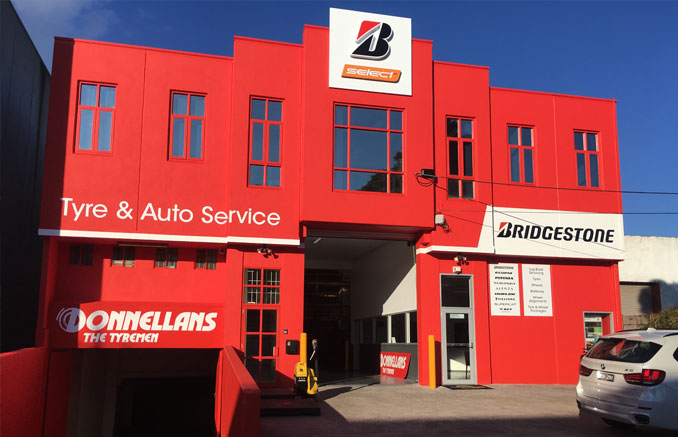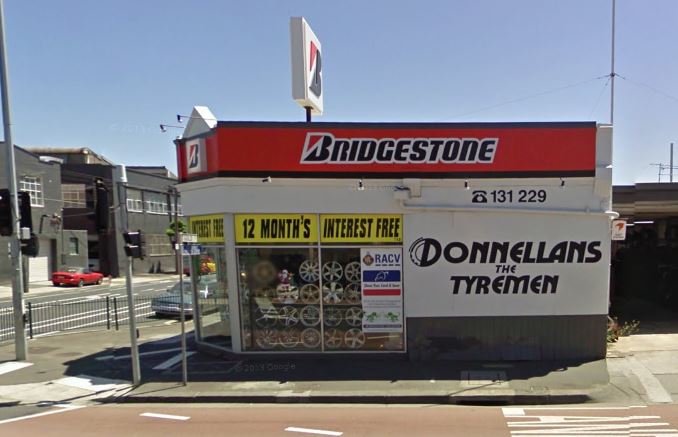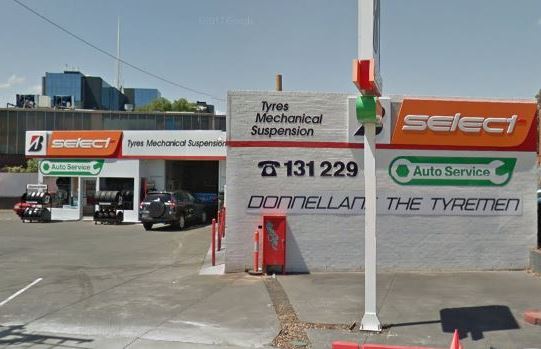Back to Latest News
Is it possible to drive on a flat tyre?
It’s a pretty simple question with a pretty simple answer; No. You can not drive on a flat tyre.
What is a flat tyre?
The term ‘flat tyre’ is used when a tyre doesn’t have as much air in it as recommended by the vehicle manufacturer.
The ideal tyre pressure varies depending on your vehicle, your tyres and how much weight you have in the car at the time. If you’re unsure what tyre pressures you should be running in your tyres, chat to a team member at Donnellans for expert information, tailored to your needs.
The most common causes of a flat tyre are:
- Impacts with debris or curbs
- Punctures and slow leaks
- Incorrectly inflated tyres
- Overloaded vehicle with too much weight
Flat tyres will overheat, due to friction, potentially leading to a dramatic blowout.
Tyre Pressure Monitoring Systems (TPMS) will alert you to a slow leak but will rarely give advanced warning of a sudden blowout.
What to do when you have a flat tyre
Driving on a flat tyre is not only damaging to your vehicle, it’s also a serious safety risk. Your ability to stop and steer can be severely impacted, while your wheel can make contact with the road, causing scratches and damage.
Continuing to drive on a tyre that is completely flat will result in major damage to your wheel, along with the potential for damaged suspension components and bodywork, as parts of the tyre will come apart and fly off.
If the flat tyre is on the front of the vehicle, your braking ability will also be affected as one side will have much more stopping power than the other. If this happens your car will want to swerve aggressively away from the side with the blown tyre.
If you can’t drive on a flat tyre, what do you do?
The first thing you should do when you have a flat tyre is make sure you and your passengers are safe. That means getting out of a traffic lane and pulling out of traffic, using your hazard lights to indicate to other traffic that there is a problem with your vehicle.
While it’s definitely not safe to drive on a flat tyre, moving your vehicle a hundred metres at a slow pace will be okay. If you're careful, damage to your wheels will be minimal compared to continuing to drive normally until you reach your intended destination.
Once you and your vehicle are in a safe location, it’s best to take a moment to decide what you’re going to do next. Leaving your hazard lights on is a great idea, and if it’s night time, leave your lights on so your vehicle is as visible as possible.
Note: If you have to get out of your vehicle on the side of a road, never turn your back to oncoming traffic. Remain vigilant.
If you are able to find a smooth and level surface in a safe location, you may be able to change your tyre for the spare and be on your way.
If you use a spare tyre, remember to read any warnings on the sidewall of your spare tyre, most are rated for only 80kp/h for temporary use only.
Does your vehicle have a spare tyre?
A vast majority of vehicles sold in Australia have a spare tyre of some kind. Whether it’s a full size spare or a space saver depends on the individual vehicle, check your owner’s manual to see what you have ahead of time.
It’s well worth taking half an hour one day to make sure that you know how to safely use the jack and wheel nut tool before you need to use it in an emergency situation. Thoroughly read your vehicle owner's manual before you use any of the included tools in your vehicle and never put any part of your body under a vehicle where it could fall.
If your vehicle does not have a spare tyre, you’ll likely have a small tool kit with some kind of tyre sealant and a small air compressor. The compressor can help inflate your tyre to a suitable pressure to get you to a tyre store for a replacement tyre. Many types of tyre sealant will make conventional tyre repairs such as plugs impossible to safely perform.
Remember that tyre sealant will only work on small punctures. There’s no magic fix for tyres with catastrophic damage such as blowouts, tears or sidewall gashes and your only option is to either put another tyre on or contact roadside assistance.
If your car is fitted with run flat tyres, you can often travel at a reduced speed for up to 80 kilometres on a deflated tyre. Your Tyre Pressure Monitoring System will provide an early warning of any tyre pressure issues.
Failing that, if you have a flat tyre, contacting a breakdown service or a roadside assistance service might be the best and safest option, rather than taking a risk using unfamiliar equipment on the dangerous roadside. Their staff are familiar with basic vehicle repairs and are used to working in and around traffic. Their vehicles are also equipped with emergency lighting to make the area safer for you and any passengers.
How can I avoid a flat tyre?
Regardless of how good a driver you are, how new your tyres are, or how often you drive your car, there is no assured way to avoid tyre damage and flat tyres. With a few tips however, you can minimise your chances of being stranded due to a tyre issue.
- Check tyre pressures once a month and ensure they are set to the correct pressure
- Perform scheduled tyre rotations
- Ensure your vehicle has had a wheel alignment performed
- Look out for hazards such as broken glass, curbs, potholes and other debris on the road
Donnellans are your local tyre experts
Donnellans have 4 convenient locations across the south-east Melbourne region, with workshops in Collingwood, Blackburn, Preston and Balwyn.
Our team can inspect your tyres for tread depth and condition, repair punctures and provide expert advice on replacement tyres to suit your needs.
Contact us today!







